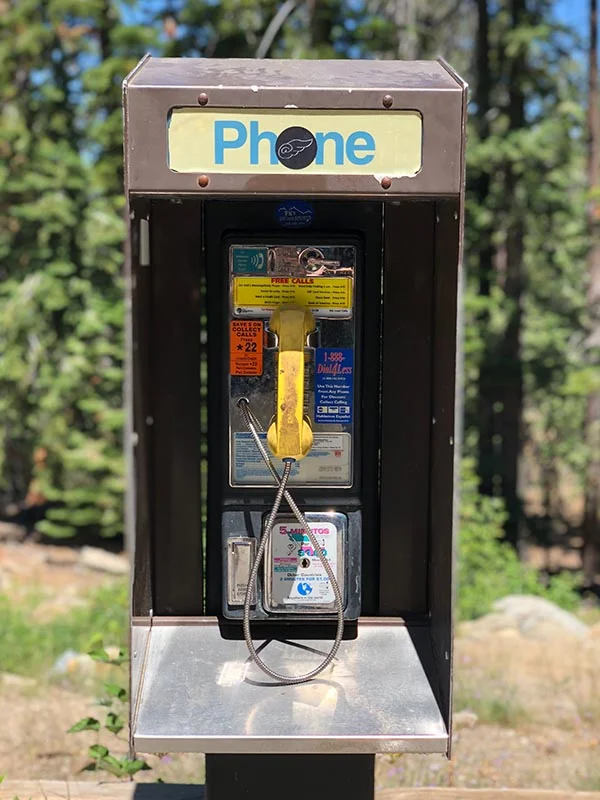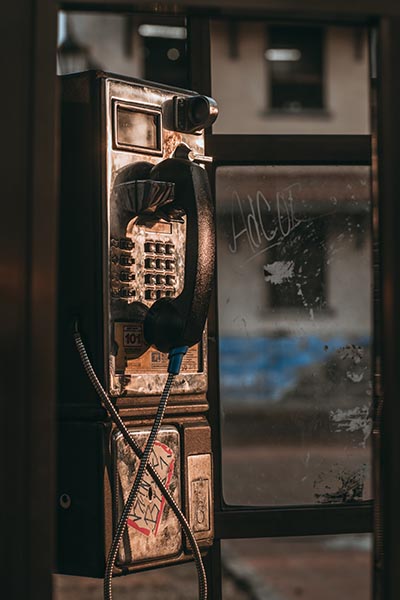Do Payphones Still Exist?
Despite what many might presume as their demise, there are still roughly 100,000 operational payphones in the United States today.
By Allyson Larcom
Twenty-five years ago, when you needed to get in touch with someone from anywhere but your own home, you’d have to find the nearest payphone and cough up a couple of quarters to make a call.
Nowadays, thanks to the advent of cell phones, the once-useful payphone looks like a relic from a bygone era. Like so many other great inventions of yore — think Blockbuster Video, JNCO jeans, and the special effects in The X-Files — payphones seem to be pretty much obsolete.
Except that they’re not.
Payphones still exist and roughly 100,000 of them remain operational in the United States. What’s more, people actually use them. According to a 2015 Federal Communications Commission (FCC) report, major payphone providers in the country raked in roughly $286 million for that year. It turns out that even if only three 50¢ calls a day are made, that payphone is still making enough money to be sustainably profitable.
Mason Harris, president of Robin Technologies, a former Washington, D.C., payphone company, told Citylab that certain areas —specifically lower-income immigrant communities — still find payphones quite useful for making affordable, long-distance calls.
“If someone wants to call home, say, to El Salvador,” he explained, “it can actually be less expensive for them to use a public payphone than a cell phone.”
The dwindling number of payphones undoubtedly hits these types of communities the hardest. Approximately 5 percent of Americans still do not own cell phones. That’s about one in every 20 individuals, or close to 16 million people. Many who are homeless also still rely upon the payphone when they need to get in touch with people far away.
Another reason why payphones still exist could be that they are also quite useful in emergency scenarios. In the event of a dead phone battery or an area without reliable cell coverage, payphones remain a reliable alternative.
Michael Zumbo, president of telecommunications firm PTS, mentioned to the Los Angeles Times that, were a natural disaster or a terrorist attack to knock out cell towers, payphones would still to work, necessitating their continued existence.
Surprising as it may be that they’re not quite gone yet, payphones are still technically a market in decline, and in many locales, it’s increasingly hard to find one.
At 25¢ per minute, the price you’d pay for a lengthy and leisurely phone call feels awfully steep. Companies might also find them costly to maintain, and they have a reputation for being “lightning rods” for crime, which also contributes to their dwindling popularity.
As for whether the payphone could possibly see a renaissance? It’s possible.
New York City, for one, is hoping to breathe new life into its public phones. In July of 2012, the city began an initiative to convert 10 payphone kiosks into WiFi hotspots. A recent report states that around 1,250 such hotspots — now called Links — have been installed throughout all five boroughs, and that the company behind it all, LinkNYC, is hoping to have a total of 7,500 installed by 2026.
There’s also a group of people called the Payphone Project that have dedicated their time and resources to preserving payphones by collecting active payphone numbers.
The group’s founder, Mark Thomas, told ABC10 that he’s inspired by “the randomness of communication,” and he encourages people to call the numbers his project has collected to “make random contact with complete strangers.”
And if all else fails, there’s always nostalgia, and that might just be enough to keep the humble payphone alive a little while longer.

















